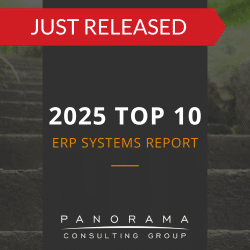Plan, execute, review, refine.
Plan, execute, review, refine.
Plan, execute, review, refine. . .
Continuous improvement in business has become a cornerstone for sustaining competitive advantage and driving operational excellence. It is an approach that focuses on incremental enhancements to processes, products, or services.
Today, we’re outlining everything you need to know about the continuous improvement cycle. This includes expert advice on implementing continuous improvement strategies within the context of digital transformation.
What is Continuous Improvement?
Continuous improvement is a systematic, ongoing effort to enhance products, services, or processes. These efforts seek to incrementally improve performance, efficiency, and quality by eliminating waste, optimizing workflows, and fostering a culture of continual progress.
The Importance of Continuous Improvement in Business
1. Enhanced Efficiency and Productivity
Continuous improvement methodologies streamline operations, reduce waste, and optimize resource utilization. This leads to enhanced efficiency and productivity, allowing businesses to deliver higher value at lower costs.
2. Improved Quality and Customer Satisfaction
By focusing on consistent enhancements, businesses can significantly improve the quality of their products and services. This leads to higher customer satisfaction and increased customer loyalty.
3. Employee Engagement and Innovation
Engaging employees in continuous improvement initiatives fosters a culture of innovation and accountability. Employees who are actively involved in the improvement process are more likely to feel valued and motivated, leading to higher job satisfaction and retention rates.
4. Adaptability and Competitive Advantage
Businesses that embrace continuous improvement are better equipped to adapt to market changes and emerging trends. This agility provides a competitive edge, enabling companies to respond swiftly to customer needs and industry disruptions.
The 2024 ERP Report
88.5% of respondents said they deployed or plan to deploy AI at their organization. Learn about AI adoption and other ERP trends by downloading our latest report.
How to Apply Continuous Improvement to Digital Transformation
Digital transformation involves the integration of digital technologies into all areas of a business to change how it operates and delivers value to customers. Continuous improvement plays a critical role in ensuring the success of digital transformation initiatives.
In particular, continuous process improvement ensures that business processes are efficient, effective, and aligned with digital transformation objectives. Process improvement involves techniques such as process mapping, benchmarking, and business process reengineering.
When our independent ERP consultants help clients apply continuous improvement to their digital transformation, we focus on the following success factors:
Success Factors for Continuous Improvement Planning
1. Finding Root Causes
The cycle begins with identifying areas for improvement, often through a root cause analysis. This helps pinpoint the underlying issues causing inefficiencies or problems. We recommend conducting process mapping workshops and involving cross-functional teams so you can access their hands-on knowledge.
2. Defining Objectives
Your continuous improvement objectives should be clear and measurable, and they should be aligned with your digital transformation goals. Whether it’s reducing operational costs, enhancing customer experience, or increasing market share, having well-defined goals will guide your continuous improvement efforts.
3. Implementing Advanced Analytics
Advanced analytics tools can uncover inefficiencies, predict trends, and provide recommendations for optimizing processes. These tools are available within many of the top ERP systems. When evaluating software, look for AI-driven analytics and IoT integration. These features enhance data collection and support data-driven continuous improvement.
4. Engaging Employees
A culture that encourages employees to propose ideas and solutions is an ideal culture for continuous improvement. We recommend providing training and resources to empower team members to identify issues and contribute effectively to improvement initiatives.
5. Establishing KPIs
Establishing key performance indicators (KPIs) is crucial for monitoring the impact of improvements. You should conduct regular reviews to assess the effectiveness of your efforts and identify any areas that might need more attention in the next improvement cycle.
For example, a pharmaceutical company in the process of selecting a CRM system might improve its lead management processes to align with their chosen system. Before implementation, the company could set KPIs to measure the impact of these improvements on lead conversion rates and new customer acquisition.
The Role of Continuous Improvement in Manufacturing
Continuous improvement is particularly crucial in the manufacturing industry, where efficiency and quality are paramount. Implementing continuous improvement strategies in manufacturing helps reduce waste, enhance productivity, and improve product quality.
One way to approach this is with a methodology known as Total Quality Management (TQM). This methodology emphasizes customer satisfaction, while ensuring every team member, from top management to frontline workers, is actively engaged in continuous improvement processes.
Lean manufacturing and Six Sigma are other popular techniques. While lean manufacturing focuses on eliminating waste and streamlining processes, Six Sigma aims to reduce variability and improve quality.
For example, a food and beverage manufacturer might be struggling with high defect rates in production. The company could implement Six Sigma techniques, which would systematically reduce process variations and improve overall quality.
Plan, execute, review, refine. Repeat.
While the continuous improvement cycle can drive enhancements in efficiency, quality, and productivity, you need the right approach. This means setting clear objectives, leveraging data analytics, and fostering a culture of continuous improvement throughout your organization.
Our business software consultants can help you implement continuous improvement as part of your digital transformation or as an overall mindset to guide all the business initiatives you pursue. Contact us below for a free consultation.





![What is the Continuous Improvement Cycle in Business? [What CEOs Need to Know]](https://www.panorama-consulting.com/wp-content/uploads/2024/07/continuous-improvement-cycle.png)







